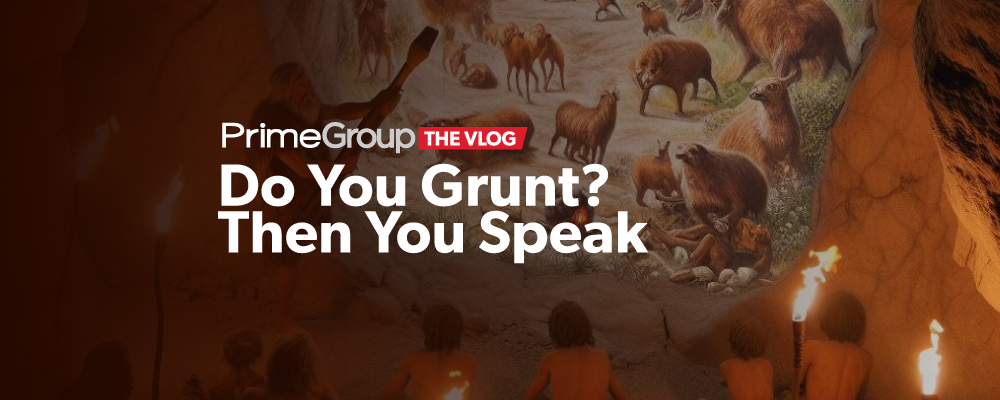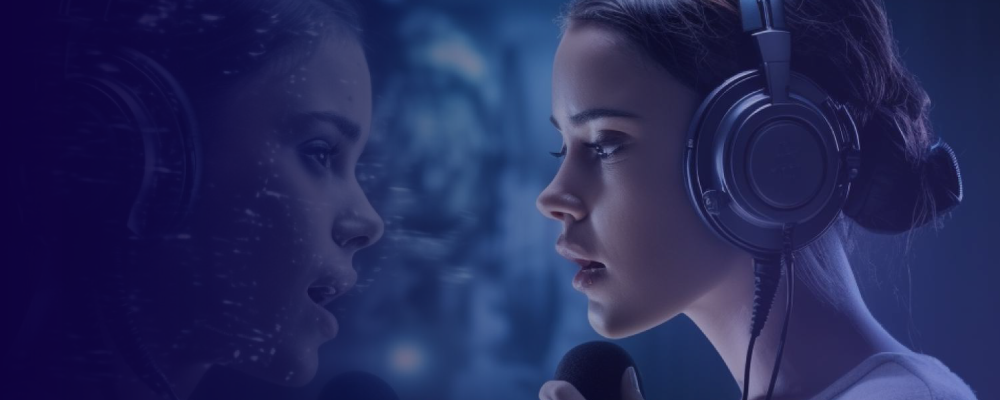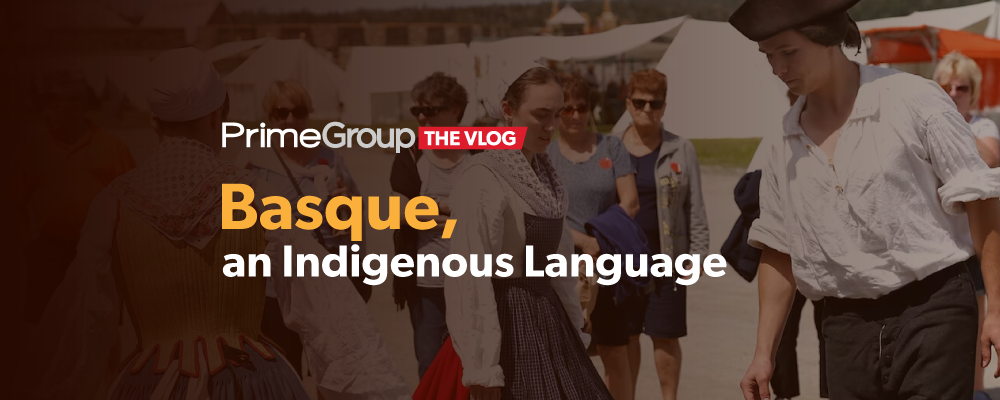I invite you to dive into the origins of language and its countless local expressions we call tongues or languages. Ready to unravel some myths and uncover fascinating truths?
Picture prehistoric times, a world that began over two million years ago. During this era, Homo erectus, an advanced species of primates, started to develop elementary forms of communication with sounds, grunts, gestures, and facial expressions. While there’s no direct evidence that Homo erectus had a language as we understand it today, it’s plausible they used distinct sounds and perhaps gestures to convey basic needs, dangers, and daily situations – behaviors we see in many animal species. As our ancestors’ brains evolved, their communication richness likely did too. With the emergence of Homo sapiens around 300,000 years ago, this complexity reached a new level.
Modern humans have a larynx and vocal apparatus capable of producing a wide range of sounds, which, coupled with cerebral development, made the emergence of more structured and complex languages possible. Initially, these would be rudimentary, somewhat akin to how tourists rely on basic gestures and sounds when unfamiliar with the local language.
But let’s address the question of when the sounds of primitive language began to differentiate into distinct languages. No doubt, this was a very complex process that took place over thousands of years, influenced by social, geographic, cultural, and evolutionary factors. Let’s analyze these factors that built the original Tower of Babel…
Geographic Isolation
One of the most significant factors in linguistic divergence is geographic isolation. When groups of speakers are physically separated by barriers like rivers, seas, or mountains, their languages tend to evolve independently. The lack of contact for centuries, even millennia, meant that each group developed its own language, which in the end became unintelligible to other distant communities. For instance, the Icelandic language is due to the geographic isolation of Iceland, a large island colonized in the Middle Ages by the Vikings. Today, Icelanders can still read texts written over a thousand years ago in Old Norse with relative ease, unlike other Scandinavian languages, which have changed more due to external influences.

Cultural Influence and Contact with Other Groups
On the other hand, contact with other groups of speakers through trade, migration, or conquest can introduce new words, sounds, and grammatical structures into a language. These influences can cause a language to evolve differently from its sibling languages. English, for example, has adopted words from many languages due to its contact with other peoples. We have words like “bungalow” from Hindi, “sofa” from Arabic, and “ballet” from French. Spanish imported from Kichwa, the language of the Incas, words as “pampa”, “potato”. From the Mexican Nahuatl, words such as tomate o chocolate. Yes, you find them in most European languages too.
Internal Innovations and Changes
Languages also change from within. Linguistic innovations, such as new sounds (phonemes), new words (lexemes), or new grammatical forms, can arise and spread within a community of speakers. Take, for example, Old French had two forms of negation, “ne…pas” and “ne…point”, which over time have simplified to just “pas” in spoken and conversational French, often dropping the “ne”.
Politics and Society
Political decisions and social structures also influence the evolution of language. For example, a dialect spoken by a politically dominant group can become the standard. In contrast, other dialects may be considered less prestigious. After the Norman conquest of England in 1066, French became the language of the nobility and power, leading Middle English to absorb numerous lexical loans related to law, government, and society, marking a distinction between the English of the upper class and the lower class.
Simplification Processes
Languages can be simplified over time. They may lose complex grammatical declensions or develop them, depending on the internal dynamics of the language and external influences. Classical Latin had a complex system of declensions with five distinct cases (nominative, accusative, genitive, dative, and ablative). However, as Latin evolved into the Romance languages such as Spanish, French, and Italian, this case system was greatly simplified. In modern Spanish and French, for example, the cases have almost completely disappeared, simplifying the grammatical structure, and leaving only a few remnants in using pronouns and prepositions.
Generation-to-Generation Transmission
As languages are passed down from generation to generation, small pronunciation, vocabulary, and grammar changes can occur. These cumulative changes can lead to dialects and, eventually, new languages. Spanish is one of the most uniform international languages there is, more so than Arabic, French, or English; however, it is clear that accents are a whole spectrum. There are also marked differences in the use of “vos”, which reminds the French “vous”, in countries like Argentina and Uruguay, as well as in some areas of Central America, reflecting changes across generations since Spanish colonization. The “voseo” is actually a phenomenon that has its roots in the form of treatment that was used in the Iberian Peninsula during the Spanish Golden Age. This usage was preserved and evolved in Latin America but fell into disuse in most of Spain.
In summary, let’s remember that the creation of languages is the product of a slow and messy change that has occurred in all human communities over the centuries. There is no clear beginning but a continuous evolution. In the digital age, languages are evolving faster than ever, with an ever-increasing presence of technology.



